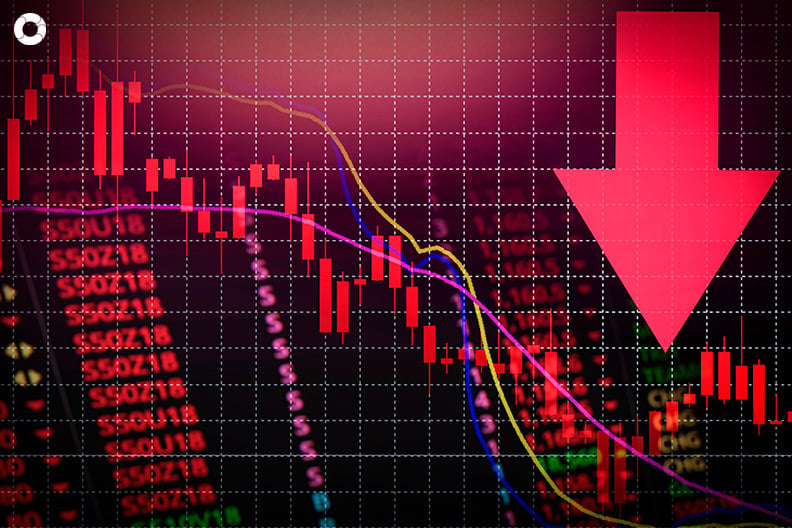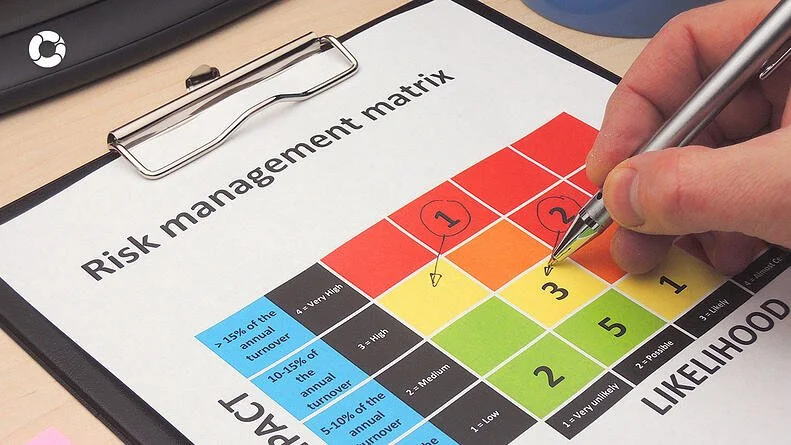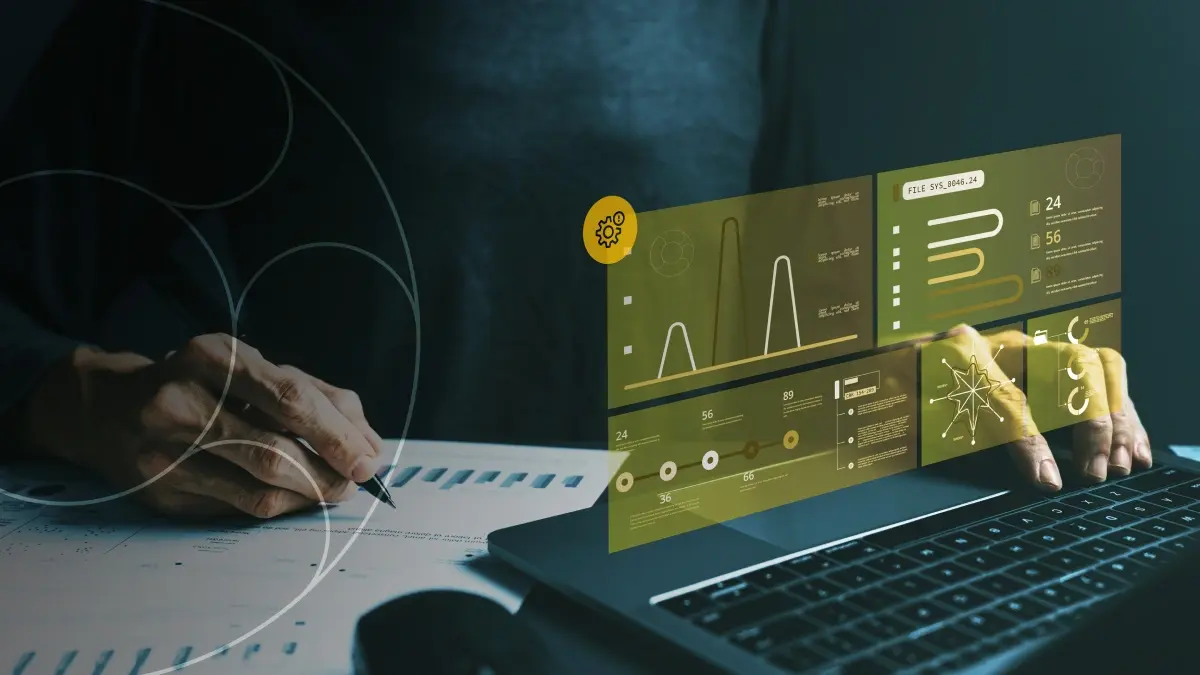Financial Risks: What Are They and What Are Their Types
Understanding and managing financial risks is essential for any organization that wants to protect its capital, make informed decisions, and ensure its long-term sustainability. In a constantly changing economic environment, understanding financial risks can be the difference between success and failure.
That’s why we bring you this article, where we’ll break down everything you need to know about financial risk, the types that exist, how to measure them, and how to manage them effectively.
|
Contents |
What Are Financial Risks?
Financial risks are understood as the likelihood of experiencing a negative and unexpected outcome due to internal or external factors that impact a company's financial stability. These risks may arise from specific causes such as inadequate operational decisions, market fluctuations, changes in interest rates, variations in asset prices, liquidity problems, or defaults by third parties.
Financial risk refers to the possibility that an investment may not generate the expected return due to factors such as market fluctuations, debtor defaults, or economic changes in the sector. This concept encompasses various situations that can affect both individuals and businesses, making it essential to understand their types in order to manage them effectively.
What Is the Importance of Understanding Financial Risks?
The importance of financial risks lies in their potential to impact a company’s stability and sustainability. These risks can have severe short- and long-term consequences if not properly managed.
Understanding these risk factors helps to:
-
Protect business capital.
-
Avoid financial losses that could jeopardize the company’s continuity.
-
Make more informed decisions aligned with the realities of the financial environment.
-
Reduce legal risks and ensure compliance with regulations.
-
Strengthen the confidence of investors and other stakeholders.
-
Facilitate long-term financial planning and forecasting.
8 Types of Financial Risks
Now that you know what financial risks are and their importance, here are the 8 types of financial risks, along with their characteristics, practical examples, and how to manage them:
-
Market Risk
-
Credit Risk
-
Liquidity Risk
-
Operational Risk
-
Legal Risk
-
Interest Rate Risk
-
Inflation Risk
-
Concentration Risk
1. Market Risk
Market risk refers to the potential losses a company may face due to fluctuations in asset prices, interest rates, exchange rates, or the volatility of financial markets. These changes can be influenced by macroeconomic factors, political events, natural disasters, or shifts in global supply and demand.
Market risk largely arises from economic uncertainties, which can impact the performance of all companies, not just one in particular. Variations in the prices of assets, liabilities, and derivatives are among the sources of this risk.
What Are Its Characteristics?
Its main characteristics include the direct impact of market variations, the effect on assets such as stocks, bonds, currencies, and commodities, and its connection to external factors like economic crises, political instability, or shocks in global supply and demand.
Example:
A Mexican company exports products to the United States. If the value of the Mexican peso falls against the U.S. dollar due to changes in interest rates or political instability, the company’s dollar-denominated revenues will be reduced when converted to pesos, negatively affecting its profits.
2. Credit Risk
Credit risk refers to the possibility that a counterparty will fail to meet its financial obligations, such as repaying debts, loans, or accounts receivable. This risk arises when a company depends on the solvency of its clients, suppliers, or financial institutions, and failure to fulfill these commitments can result in financial losses for the company.
There are two types of credit risk: retail and wholesale.
-
Retail credit risk refers to the risk associated with financing individuals and small businesses through mortgages, credit cards, or other forms of credit.
-
Wholesale credit risk, on the other hand, stems from the organization's own investments, such as sales of financial assets, mergers, or acquisitions.
The case of subprime mortgages in the United States, which triggered the 2008 economic crisis, illustrates how credit risk materializes when not properly managed.
Subprime mortgages were high-risk loans with elevated interest rates, granted to people without jobs or stable incomes.
Banks began expanding the profile of subprime mortgage applicants to increase revenue. However, since many borrowers couldn’t make payments, the rate of debt defaults increased.
This situation led to the collapse of thousands of banks in the U.S. and damaged the reputation of others, such as JP Morgan Chase.
What Are Its Characteristics?
This risk is tied to the solvency of debtors and their ability to meet agreed-upon payments. It affects business relationships as well as loans and financing provided by the company and can involve risks of defaults, payment delays, or contract breaches, which negatively impact the company’s liquidity and financial stability.
Example:
A business supplying construction materials grants credit to a client to be paid in 60 days. If, due to financial problems or poor management, the client fails to make the payment on the agreed date, the supplier faces a credit risk. This not only affects the company’s cash flow but can also jeopardize its ability to meet its own financial obligations, such as salaries, supplier payments, or loans.
Want to dive deeper? Check out this article where we explain how to manage credit risk.
3. Liquidity Risk
Liquidity risk occurs when a company does not have enough cash or liquid assets to meet its short-term financial obligations, such as payments to suppliers, salaries, taxes, or debts. This risk can arise from poor cash flow management, a mismatch between income and payments, or difficulties in quickly converting assets into cash, potentially jeopardizing the company’s financial stability.
What Are Its Characteristics?
-
Directly impacts the company’s ability to operate on a daily basis.
-
Can result from poor cash flow management, external crises, or unforeseen changes in market conditions.
-
May lead to solvency issues and hinder access to financing, affecting the company’s financial stability.
Example:
An electronics manufacturing company has had a successful sales year, but its customers have 90-day payment terms. Meanwhile, the company needs to pay its suppliers and cover operating costs every month. If it doesn’t have enough cash on hand due to delayed payments, it might struggle to meet short-term commitments, such as salaries or invoices.
4. Operational Risk
Operational risk involves losses caused by internal failures in processes, systems, people, or unforeseen external factors. This type of risk can arise from human errors, technological failures, internal fraud, supply chain issues, or natural disasters. Poor management of these aspects can impact a company’s operational efficiency, lead to unexpected costs, and, in some cases, harm its reputation and customer trust.
These risks can often be mitigated by recognizing that a specific risk can trigger many others. For example, a broken machine doesn’t just result in repair costs—it also causes losses due to production downtime, delays in product deliveries, and potentially damages the company’s reputation.
Sign up for free on Pirani to learn how to identify and manage your organization's operational risks, or schedule a 15-minute meeting with one of our experts to address all your questions.
What Are Its Characteristics?
-
Characterized by human errors, technological failures, or issues in production processes.
-
Linked to internal company failures that affect operational efficiency.
-
Encompasses both physical and cybersecurity risks.
-
Includes vulnerabilities related to data management, infrastructure, and management systems.
Example:
A manufacturing company relies on an automated production process that uses specialized machinery. One day, a critical machine breaks down due to a lack of preventive maintenance, halting production for several hours. This causes delays in delivering products to customers and results in a loss of revenue.
Download the guide we’ve prepared on Pirani's operational risk management system.
5. Legal Risk
Legal risk arises when a company fails to comply with current laws or regulations, leading to fines, penalties, or legal actions. This type of risk is associated with non-compliance with local or international laws, sector regulations, intellectual property rights, or commercial contracts. Furthermore, legal risk can damage the company’s reputation, incur unexpected costs, and affect its operational continuity.
What are its characteristics?
This risk impacts the legal integrity and regulatory compliance of a company. It is tied to both local and international laws and includes aspects such as contracts, tax regulations, commercial laws, and intellectual property rights. It may result from a failure to stay updated with regulations, leading to penalties or legal actions that harm the company’s reputation and financial stability.
Example:
A food company fails to comply with local product labeling regulations and launches a batch of products without correctly indicating the ingredients and allergens on the packaging. A customer with food allergies purchases the product, does not find the relevant information, and suffers a severe allergic reaction. The customer decides to sue the company for not meeting food safety standards. As a result, the company faces a lawsuit, significant fines for non-compliance, and considerable damage to its reputation, which negatively impacts sales and distributor relationships.
6. Interest Rate Risk
Interest rate risk refers to potential losses caused by fluctuations in interest rates, directly impacting the cost of debt or income from investments. An increase in interest rates can raise the cost of short- and long-term loans, while a decrease may reduce returns on fixed investments, thereby affecting the company’s profitability and financial stability.
What are its characteristics?
This risk impacts variable-rate loans, where rising interest rates increase debt costs. It affects the valuation of financial assets, such as bonds, and can reduce income from fixed investments. It is closely linked to central bank monetary policies and movements in financial markets, which drive interest rate fluctuations.
Example:
XYZ Company has a $1 million loan with a variable interest rate tied to market rates. If central banks decide to increase interest rates to curb inflation, the company’s debt costs will rise as variable rates increase. This raises the amount the company must pay monthly in interest, affecting its cash flow and reducing profitability. Consequently, the company may struggle to meet its financial obligations, impacting its economic stability.
7. Inflation Risk
Inflation risk occurs when the general rise in prices reduces the purchasing power of money, affecting the real value of income, assets, or investments. In an inflationary environment, operating costs often rise, which can impact profit margins. Additionally, investments in fixed-return assets may lose real value if inflation outpaces the returns.
What are its characteristics?
This risk is characterized by a decrease in the company’s purchasing power as rising prices reduce the real value of income and assets. It also increases operating costs, driving up expenses for production, distribution, and other key processes, which affects profit margins. Additionally, it can restrict the company’s ability to invest, as more available capital is allocated to cover rising costs.
Example:
A restaurant chain in Argentina experiences a significant increase in inflation, leading to higher food, utility, and wage costs. Even though demand for its products remains constant, rising input costs reduce profit margins. To maintain profitability, the chain is forced to raise menu prices, which could affect customer loyalty and its competitive position in the local market.
8. Concentration Risk
Concentration risk refers to the vulnerability a company faces when it relies heavily on a single customer, supplier, or market for its operations. This dependency can jeopardize the company’s financial stability if adverse changes occur in these key relationships, such as losing a client, increased supplier costs, or a crisis in the target market for most of its products or services.
What are its characteristics?
This risk directly affects a company’s financial stability, particularly when it relies heavily on a single source of income, such as one customer, supplier, or market. This dependency increases vulnerability to unforeseen events, such as changes in commercial relationships, bankruptcies, or market fluctuations. Concentration risk can be even more critical in limited or highly competitive markets, where alternatives are scarce and companies depend on a small number of key players.
Example:
An electronics component manufacturer that depends on a single client for 80% of its sales—a large technology company—faces concentration risk. If the client decides to switch suppliers or reduce orders due to an internal crisis, the supplier company could suffer significant revenue losses, severely impacting its financial stability. This type of dependency also limits the company’s ability to diversify its client base, increasing its vulnerability to changes in the client’s decisions.
How to Manage Financial Risks
Here’s how you can manage financial risks, anticipate challenges, and make informed decisions to ensure long-term success.
-
Identify Financial Risks: The first step is to recognize the financial risks your company is exposed to.
-
Evaluate and Quantify Risks: Once the risks are identified, evaluate their likelihood and potential impact on the company’s finances. This can be done using tools like sensitivity analysis, value at risk (VaR), and stress testing.
-
Mitigate Risks: There are various strategies to mitigate risks depending on the type, including financial hedging, diversification, credit evaluation, cash flow control, and risk insurance.
-
Implement Internal Controls: It is essential to establish well-defined controls and procedures for early identification of risks and quick responses to any deviations.
-
Establish a Contingency Plan: Managing financial risks also involves preparing for the unexpected. Developing contingency plans for situations such as the insolvency of a key client or a sudden financial market downturn will help the company react quickly and mitigate the financial impact.
-
Monitor Continuously: Financial risks are not static, so continuous monitoring is crucial. This involves reviewing policies, strategies, and regular reporting.
-
-
Organizational Culture: Fostering a risk management culture within the company is key. This involves training employees to identify risks and make informed decisions at all levels.
How Are Financial Risks Measured?
As mentioned, one way to manage these risks is through evaluation and monitoring. Let’s dive deeper into the methodologies and tools used to measure financial risks. Here are the main ones:
1. Sensitivity Analysis
This analysis evaluates how changes in one or more key variables can affect a company's financial outcome. It measures the impact of variations in interest rates, asset prices, exchange rates, and more, helping businesses understand potential changes in performance due to such fluctuations.
2. Value at Risk (VaR)
One of the most common tools for measuring market risk, VaR estimates the maximum expected loss of an asset or portfolio over a specific period, under normal market conditions, and with a determined confidence level.
3. Scenario Analysis
Scenario analysis examines different potential futures (scenarios) that could impact a company. This approach helps identify how hypothetical events like global economic shifts, financial crises, or natural disasters could alter financial performance.
4. Monte Carlo Simulation
A popular advanced technique, Monte Carlo simulation uses random simulations to estimate the impact of various risks on financial outcomes. It’s particularly useful for evaluating risks involving multiple uncertain and complex variables.
5. Correlation Coefficient
Correlation measures how two variables move in relation to each other. In the context of financial risks, it’s used to understand relationships between financial assets, helping to manage market risk and diversify investment portfolios.
6. Financial Ratios
Ratios such as liquidity ratio, debt ratio, or profitability ratio are key indicators for measuring financial risk internally. They assess a company’s ability to meet financial obligations, its debt levels, and profitability in the face of potential market downturns.
7. Stress Testing
Stress tests simulate how companies would perform under extreme market conditions or unexpected events, such as financial crises or abrupt market crashes. These tests measure a company’s resilience to unusual situations.
8. Probability of Default and Loss Given Default
These are metrics used in credit risk assessment. Probability of default measures the likelihood that a borrower will fail to meet payments, while loss given default calculates the expected loss if a default occurs. These metrics help evaluate customer credit quality and calculate credit risk provisions.
Now you know what financial risks are, their types, some examples, and how to manage and measure them. Let us know in the comments what you think about this content and what other topics you’d like to learn about in the world of risk management.
We’d love to hear from you!
You May Also Like
These Related Stories

What is market risk?

What are the methods for money laundering?

What is a risk map and the 3 different types?

Cyber vs Operational Resilience: What’s the real difference?

What the TD bank case teaches us about modern AML failures


Comments (8)